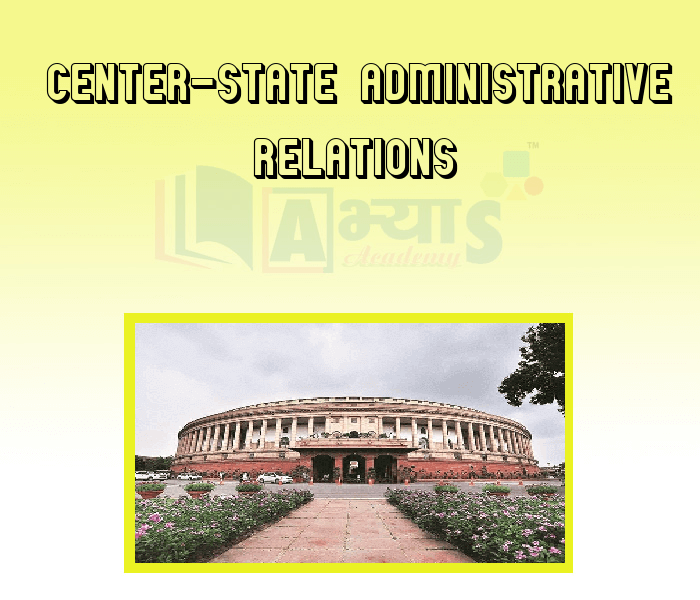Center-State Administrative Relations










Centre - State Administrative Relations
Centre State Administrative Relations
Laws of Union Control over States
In terms of national unity, the Union government has certain administrative powers in relation to the States which are as follows :
(1) Obligation of the States-According to the Constitution, the States should use their executive power in such a way that the laws made by Parliament are followed. It is the duty every State to use all possible measures to implement the laws of Parliament. It is also the responsibility of the States not to let any hindrance in the central administration (Art. 257).
(2) (The Center may give direction to the States) States can be directed by the Centre to ensure compliance with the laws made by Parliament under Art: 256 and the laws existing in that state. For example, the construction of roads and bridges of national and military importance is done by the Central government, but the Centre has the right to give necessary instructions to the States for the construction and proper
According to Article ____________________,In the event of the President declaring a National Emergency, the Parliament gets the right to make laws on the subjects of the State List. | |||
| Right Option : B | |||
| View Explanation | |||
Which of the following article of Indian Constitution mentions - Power of parliament to legislate on subjects in the national interest in relation to subjects in the state list ? | |||
| Right Option : A | |||
| View Explanation | |||
Regional Councils have been created ___________________
| |||
| Right Option : B | |||
| View Explanation | |||
Students / Parents Reviews [10]
My experience with Abhyas is very good. I have learnt many things here like vedic maths and reasoning also. Teachers here first take our doubts and then there are assignments to verify our weak points.

Shivam Rana
7thOne of the best institutes to develope a child interest in studies.Provides SST and English knowledge also unlike other institutes. Teachers are co operative and friendly online tests andPPT develope practical knowledge also.

Aman Kumar Shrivastava
10thIt has a great methodology. Students here can get analysis to their test quickly.We can learn easily through PPTs and the testing methods are good. We know that where we have to practice

Barkha Arora
10thIt was a good experience with Abhyas Academy. I even faced problems in starting but slowly and steadily overcomed. Especially reasoning classes helped me a lot.

Cheshta
10thIt was good as the experience because as we had come here we had been improved in a such envirnment created here.Extra is taught which is beneficial for future.

Eshan Arora
8thAbhyas Methodology is very good. It is based on according to student and each child manages accordingly to its properly. Methodology has improved the abilities of students to shine them in future.

Manish Kumar
10thI have spent a wonderful time in Abhyas academy. It has made my reasoning more apt, English more stronger and Maths an interesting subject for me. It has given me a habbit of self studying

Yatharthi Sharma
10thAbout Abhyas metholodology the teachers are very nice and hardworking toward students.The Centre Head Mrs Anu Sethi is also a brilliant teacher.Abhyas has taught me how to overcome problems and has always taken my doubts and suppoeted me.

Shreya Shrivastava
8thBeing a parent, I saw my daughter improvement in her studies by seeing a good result in all day to day compititive exam TMO, NSO, IEO etc and as well as studies. I have got a fruitful result from my daughter.

Prisha Gupta
8thA marvelous experience with Abhyas. I am glad to share that my ward has achieved more than enough at the Ambala ABHYAS centre. Years have passed on and more and more he has gained. May the centre flourish and develop day by day by the grace of God.
